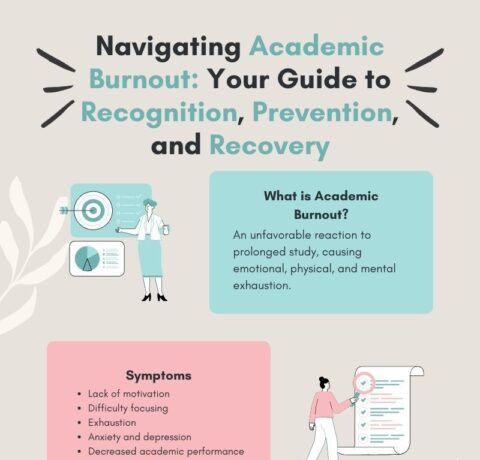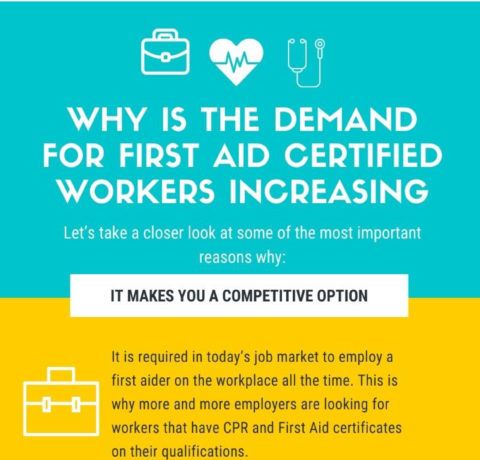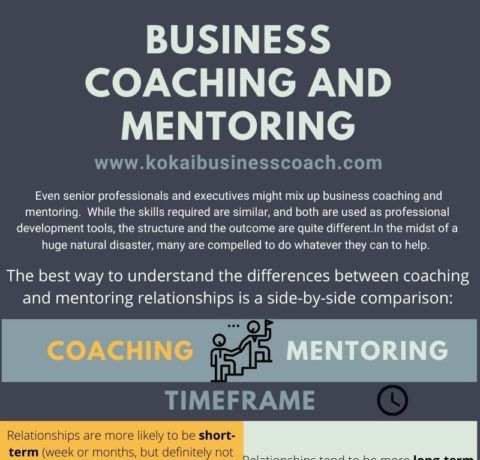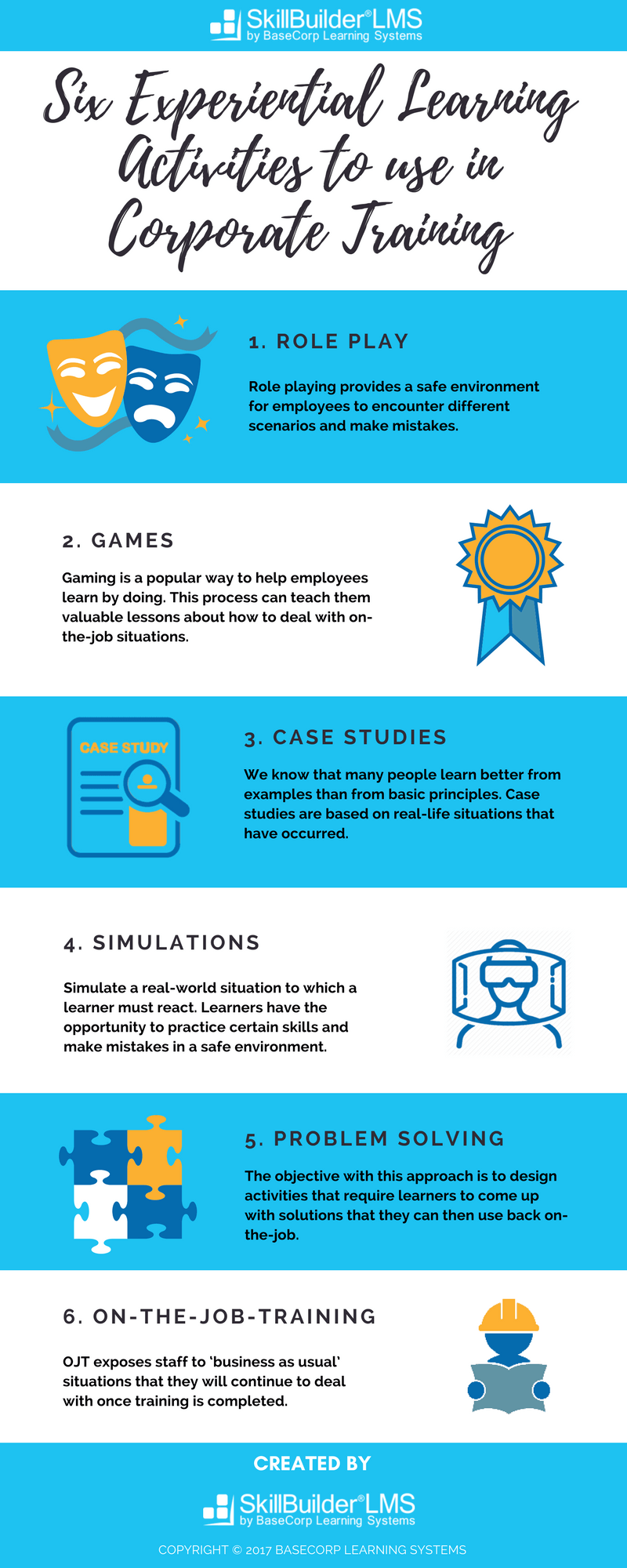Six Experiential Learning Activities to Use in Corporate Training Infographic
Experiential learning is a strategy commonly found in K-12 and higher education programs, but it doesn’t always lend itself well to the workplace. This is because it’s often expensive, takes more time to implement and is hard to track and manage, a requirement for most Learning and Development (L&D) teams, and necessary for proving Return on Investment (ROI).
However, more organizations are gravitating to this learning approach because by merging two traditionally separate aspects of training, learning and hands-on experience, learners are generating skills which they can immediately use back on-the-job.
When we talk about what experiential learning looks like in an organization, we generally think of field-based experiences (i.e., out in the real world). However, experiential learning can also happen in a classroom or at work, on-the-job. Let’s take a look at some examples:
1. Role play
Role playing provides a safe environment for employees to encounter different scenarios and make mistakes.
2. Games
Gaming is a popular way to help employees learn by doing. This process can teach them valuable lessons about how to deal with on-the-job situations.
3. Case studies
We know that many people learn better from examples than from basic principles. Case studies are based on real-life situations that have occurred.
4. Simulations
Simulate a real-world situation to which a learner must react. Leaners have the opportunity to practice certain skills and make mistakes in a safe environment.
5. Problem solving
The objective with this approach is to design activities that require learners to come up with solutions – ways of dealing with issues or challenges that they can then use back on-the-job.
6. On-the-job training (OJT)
OJT exposes staff to ‘business as usual’ situations that they will continue to deal with once training is completed.
See also:







You can adjust your cookie preferences here.